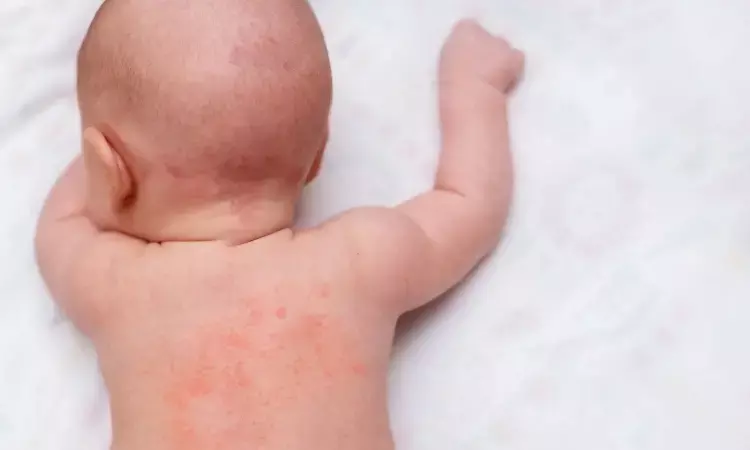- Home
- Medical news & Guidelines
- Anesthesiology
- Cardiology and CTVS
- Critical Care
- Dentistry
- Dermatology
- Diabetes and Endocrinology
- ENT
- Gastroenterology
- Medicine
- Nephrology
- Neurology
- Obstretics-Gynaecology
- Oncology
- Ophthalmology
- Orthopaedics
- Pediatrics-Neonatology
- Psychiatry
- Pulmonology
- Radiology
- Surgery
- Urology
- Laboratory Medicine
- Diet
- Nursing
- Paramedical
- Physiotherapy
- Health news
- Fact Check
- Bone Health Fact Check
- Brain Health Fact Check
- Cancer Related Fact Check
- Child Care Fact Check
- Dental and oral health fact check
- Diabetes and metabolic health fact check
- Diet and Nutrition Fact Check
- Eye and ENT Care Fact Check
- Fitness fact check
- Gut health fact check
- Heart health fact check
- Kidney health fact check
- Medical education fact check
- Men's health fact check
- Respiratory fact check
- Skin and hair care fact check
- Vaccine and Immunization fact check
- Women's health fact check
- AYUSH
- State News
- Andaman and Nicobar Islands
- Andhra Pradesh
- Arunachal Pradesh
- Assam
- Bihar
- Chandigarh
- Chattisgarh
- Dadra and Nagar Haveli
- Daman and Diu
- Delhi
- Goa
- Gujarat
- Haryana
- Himachal Pradesh
- Jammu & Kashmir
- Jharkhand
- Karnataka
- Kerala
- Ladakh
- Lakshadweep
- Madhya Pradesh
- Maharashtra
- Manipur
- Meghalaya
- Mizoram
- Nagaland
- Odisha
- Puducherry
- Punjab
- Rajasthan
- Sikkim
- Tamil Nadu
- Telangana
- Tripura
- Uttar Pradesh
- Uttrakhand
- West Bengal
- Medical Education
- Industry
Electrical impedance spectroscopy effective in detection of Atopic Dermatitis

Researchers investigating skin barrier dysfunction in children have made a breakthrough using electrical impedance spectroscopy (EIS) to detect the early signs of atopic dermatitis (AD). The study published in the Allergy Journal offers new hope for early diagnosis and intervention in this common skin condition.
Atopic dermatitis, a chronic skin disorder characterized by itchy and inflamed skin, often starts in childhood and can significantly impact a child's quality of life. Early detection and management are crucial, but traditional methods for assessing skin barrier function have limitations. This study explored the potential of EIS to fill this diagnostic gap.
The research involved EIS measurements taken at various intervals from 4 months to 3 years of age in children who either developed AD (66 participants) or did not (49 participants). Using these EIS measurements and the AD status of the children, a machine learning algorithm was developed to create an EIS/AD score. This score reflects the probability that a particular measurement indicates a child with active AD.
The results were promising. The EIS algorithm demonstrated an impressive ability to differentiate between healthy skin and skin affected by active AD, with an area under the curve (AUC) of 0.92, indicating high accuracy. Remarkably, it could also identify skin abnormalities in children who did not currently have active AD. Importantly, the EIS/AD score was consistent across different age groups, suggesting that the method is applicable from infancy through early childhood.
While the study found no clear link between the EIS/AD score and the severity of AD or sensitization to allergens, its primary achievement lies in its ability to detect early signs of AD. Early intervention in atopic dermatitis is often more effective, and this novel method could pave the way for timely treatment and improved outcomes for affected children.
This study suggests that EIS has the potential to revolutionize the detection of atopic dermatitis in children. With further development and validation, this method could become a valuable tool for clinicians, offering hope for improved management and better outcomes for children living with AD.
Source:
Sasaki, M., Sundberg, M., Frei, R., Ferstl, R., Heye, K. N., Willems, E. P., Akdis, C. A., Lauener, R., & Roduit, C. (2023). Electrical impedance spectroscopy detects skin barrier dysfunction in childhood atopic dermatitis. In Allergy. Wiley. https://doi.org/10.1111/all.15895
Neuroscience Masters graduate
Jacinthlyn Sylvia, a Neuroscience Master's graduate from Chennai has worked extensively in deciphering the neurobiology of cognition and motor control in aging. She also has spread-out exposure to Neurosurgery from her Bachelor’s. She is currently involved in active Neuro-Oncology research. She is an upcoming neuroscientist with a fiery passion for writing. Her news cover at Medical Dialogues feature recent discoveries and updates from the healthcare and biomedical research fields. She can be reached at editorial@medicaldialogues.in
Dr Kamal Kant Kohli-MBBS, DTCD- a chest specialist with more than 30 years of practice and a flair for writing clinical articles, Dr Kamal Kant Kohli joined Medical Dialogues as a Chief Editor of Medical News. Besides writing articles, as an editor, he proofreads and verifies all the medical content published on Medical Dialogues including those coming from journals, studies,medical conferences,guidelines etc. Email: drkohli@medicaldialogues.in. Contact no. 011-43720751


